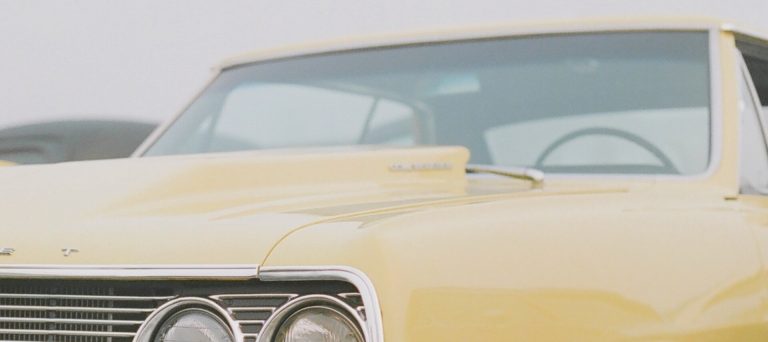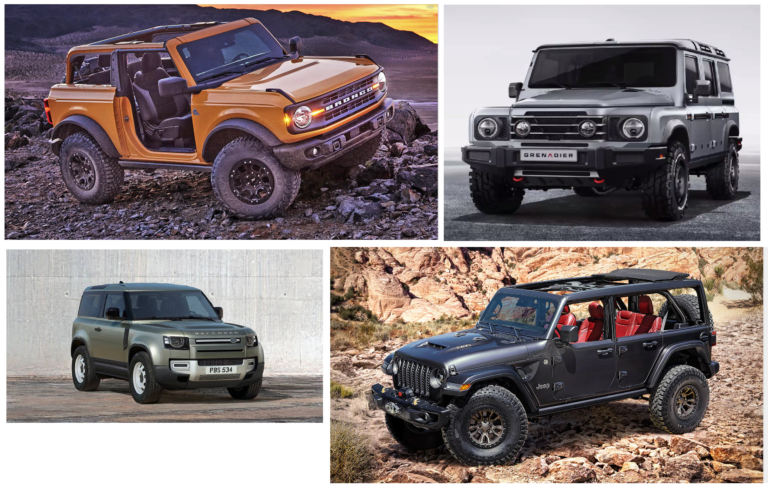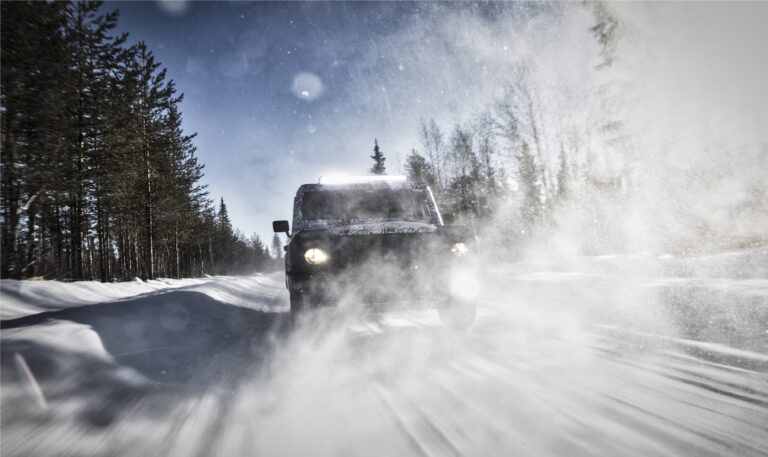Hi Baraza,
I currently own a Toyota Allion A18 and would like to upgrade to a Forester X20, the non-turbo version. I would like you to compare the two in terms of the following:
1. Fuel consumption.
2. Cost of maintenance.
3. Resale value.
Lastly, how hardy is the Forester for off-road use in respect to ground clearance and performance?
Omondi
—————————————
1. The Allion is more economical. No contest.
2. Again, the Allion may be cheaper to maintain.
3. The Forester costs more when new and is a cross-over utility, so it has a higher resale value.
The Allion tends to depreciate badly if used hard.
Off-road, the Forester is good in those respects. Just don’t follow a Land Rover Defender everywhere, you might end up in the clag and unable to come out.
—————————————
Baraza,
Please tell me more about Suzukis, especially the Samurai and Jimny models, in terms of fuel efficiency, stability and off-road nature.
I am planning to buy one for use both at the office and managing businesses in the village.
—————————————
Samurai and Jimny are a pair of hard-to-love cars that are, frankly, pretty outdated.
Fuel efficiency is good, but could be better with improved aerodynamics. Stability is very poor in both; falling over is very easy.
They are mean off-roaders: back when the Porsche Cayenne was new, it got its face pushed in by a Jimny in a tough off-road challenge.
Bear in mind that one Cayenne, particularly the Turbo, will cost you almost 15 Jimnys.
Where in God’s name are your office and village businesses located to warrant the use of a Jimny?
It is like saying “I bought a Defender to take my kids to school”.
The natural reaction would be; “Do your kids go to school in the Grand Canyon or the middle of the Sahara?”
—————————————-
Hi,
I have a question that I hope you will address so as to bring some sanity in my home because, as it is now, my wife and I cannot agree on an issue that I consider light but which carries a lot of weight for her.
We have lived in Cyprus for close to 15 years and have decided to come back home.
For this reason, we are taking all our belongings with us apart from one, which is the bone of contention — my wife’s “Smart ForTwo” Cabrio road car.
Now, we happen to visit Nairobi once every year and, for close to ten years now, I have never seen this car on Kenyan roads.
The problem is that my wife seems to have bonded more with this car than she did with me.
She has driven both the first and second (newest) versions of the Smart car, and I must admit that it is a great car to drive.
It has a very light but compact chassis and it grips the road like a spider. It is very firm, spacious (in spite of it’s miniature size), comfortable, fast and very fuel efficient.
I do not know much about cars, but at least I know that the car is manufactured by Mercedes Benz and all parts and servicing is done by Mercedes Benz centres here in Lemesol and worldwide.
But the car is purely made for smooth-road driving and my fear is that it might not be able to handle the rough terrain that is characteristic of Kenyan roads.
I am also wary about the availability of spares and servicing at Mercedes centres in Nairobi. It is because of this that I am trying to convince my wife to sell it and get another car in Nairobi.
But she is adamant that she must have her two-seater toy in Nairobi. I am afraid that we will be looking for a scrap metal dealer soon after we arrive.
Please help, I need to know whether we should ship this car or whether we should just forget about it.
Joe
——————————————
Joe, you are right. It is unlikely that the Smart will survive the vagaries of driving on Kenyan roads.
And I seriously doubt if DT Dobie can handle its service and maintenance; it is built by Mercedes yes, but it is made by Swatch, the Swiss watch company.
I believe it uses a turbocharged 600cc three-cylinder engine, right? Where will the spares come from?
If you ding it in a parking lot, you will have to import the replacement panel, possibly from Smart themselves (the GRP bodywork cannot be panel-beaten).
And I doubt if Nairobians are as decent as Cypriots when it comes to driving, so believe me, dents are in the offing once you land here.
I have seen two Smart cars so far in Nairobi, though, but both were Smart ForFours.
——————————————
Jambo Baraza,
Kindly advise me on the usability or legal aspects of driving a left-hand vehicle in Kenya.
Mike
—————————————–
It turns out that importation of LHDs has been kiboshed by our dear government, which throws a spanner into my plans for importing a used Bugatti Veyron.
That is unless the vehicle in question is an “emergency vehicle” (police, fire engine or ambulance).
Maybe I should stick a blue light on the roof of that Veyron.
Legal aspects? None that I know of. I still see LHDs on the road and no one seems to be going after them with lawsuits or charges.
Overtaking on the highway could be a real exercise though, and joining an oblique junction that was made specifically for RHDs will test your skills to the limit.
—————————————-
JM,
I would like your opinion on something that has been disturbing me for a while now.
I imported a 2003 Toyota Voxy 2.0 two years ago and the car seems to be very thirsty.
1. I went to Mombasa once and used a full tank one way. Coming back, I used another full tank.
In Nairobi, I use Sh700 daily over a 24-kilometre distance, which translates to about 5kpl, yet I avoid traffic.
2. The engine and oil lights usually come on when I’m driving but later disappear.
3. The car is very uncomfortable; you can feel bumps and very small potholes.
I have driven a friend’s Fielder over the same road and it rides smoothly. Again, what could be the problem?
I installed heavy duty Monroe springs but not the shocks since I was told they were in good condition, but nothing changed.
4. The car is on 17 inch, low profile Pirelli tyres (it came with these); might these be affecting comfort?
And what’s the recommended tyre pressure? I use 30psi.
NB: The car does not carry heavy luggage.
Ian
—————————————
I can’t, for the life of me, understand why the consumption would be that high, given that you don’t encounter traffic.
Have you topped up the oil? Or replaced it? That should take care of the oil warning light.
If you did so recently, then the oil pressure may be too high.
The ‘check engine’ light might suggest weakening plugs (unlikely) or a faulty MAF sensor that is causing the abnormal consumption, but this would normally show in a diagnosis.
Maybe the ECU cable is loose (I’ve been there before, and somehow this also increased the consumption on my little Starlet to a highly abnormal 6kpl on the highway.
The low profile running gear and heavy duty shocks are responsible for the uncomfortable ride. Live with it or revert to default settings.
——————————————
Hi Baraza,
I overhauled my Toyota Surf 3L engine, replacing everything including the pistons, but the vehicle is still over heating.
My mechanic seems to have given up and now suspects that the cylinder head might have a crack or something.
The money I have spent so far is enough to buy a new engine, so I will greatly appreciate your help.
—————————————–
What kind of overhaul was that in which the mechanic did not notice the cylinder head was cracked?
I am not a mechanic, but I have once overhauled an engine (believe it).
To check for hairline fractures, cracks or fissures, wash or douse the affected part in fine oil (like the type used in old typewriters or sewing machines), wipe it clean with a rag then dust it with French chalk.
The cracks and fissures will stain the chalk owing to the oil still in the cracks. Simple.
Was the head gasket replaced? Are the radiator hoses intact? Does the water pump work? The fans?
Check all these out and therein you will find your answer.
—————————————–
Hi Baraza,
Thank you for your excellent motoring articles. Always a good read. Now, I drive a diesel 2002 Isuzu TFR54 pickup (local).
It was previously company branded, and most likely the limited slip differential label at the back has been painted over.
1. So, how do I tell if it has limited slip differential, and what are its benefits over an open diff?
2. I had the engine rebuilt and my conservative calculations indicate 13 kpl.
Is this possible with a 2.5-litre diesel engine? I live 30 km out of town and use it as my daily commute.
3. Is it true that after an engine rebuild it will take time (for lack of a better term) to “open up” and increase in speed and efficiency, could this also be described as a breaking-in period?
Vic
——————————————
1. The best way to tell if it has an LSD (not to be confused with the drug) is to try and drift it, but don’t do this, you will roll over and hurt yourself if you have not mastered the art.
And pickups don’t drift easily. Just ask the former owner for the handbook of that particular car. Benefits of an LSD over an open diff include better traction on treacherous surfaces with minimum waste of torque through one tyre spinning.
2. A consumption of 13 kpl is just fine, if anything, you should be proud of it.
3. Yes. The phrase you are looking for is not “open up” but “bedding in”, and yes, this is the breaking in period. It is usually 1,000 km for most Isuzu KB pickups ever since the days of Chev-Luv.
—————————————
Baraza,
There is something that has bothered me for a while but the mechanics I have spoken to haven’t been of much help.
The question is: Doesn’t the size of the tyres affect the accuracy of the odometer reading?
Allow me to explain. How does a car measure distance travelled?
I assume that it does this by “counting” the number of tyre revolutions (presumably somewhere around the differential or gearbox).
For instance, if you jack up the car and engage the gear, one of the drive wheels starts spinning and the odometer continues reading mileage “travelled”.
If this is so, then when you change the tyres (for example moving from say 13” to 14” tyres, or from normal to thin-profile tyres of the same radius) then the odometer reading can no longer be accurate since the car does “not know” that you have changed the tyre size.
Since I changed the tyres on my Starlet to bigger ones, I have found that the mileage seems to be understated. For example, a 100km distance now shows, say, 95 km. Am I making any sense?
Karani
——————————————
You are making sense, apart from the part where you say different profile tyres of the same radius will give different odometer readings.
Same radius equals same circumference, therefore one tyre revolution will cover the same distance, whether on low profile or high profile tyres, provided the wheel diameter is the same.
And, believe it or not, cars nowadays are so clever they can tell when you are being dodgy.
A tale has it that someone imported an E60 BMW M5 and tried to swap the low profiles (stock on the M5) with “ordinary” high profile tyres suitable for Kenyan roads, and the car simply would not start.
Changing them back put the car back in a good mood and away he went. Interesting.
—————————————-
Dear Mr Baraza,
Your advice is succinct, your wit unmatched, and you’re quite entertaining. Thank you.
Now, there is something that has baffled me for a while now: Why is it so expensive to import cars into Kenya?
I know that the Government has set the import and excise duties and associated fees… but why so expensive?
It costs twice as much its value to import a car into Kenya. Even second hand cars are double the cost!
Cars in the US and UK are shipped (from Japan, Germany etc) just as cars are shipped to Kenya, yet cars in Kenya cost twice as much the cars in the two countries and many others.
I have tried in vain to contact KRA with this inquiry.
Paul
————————————-
Paul, If it is only now that you realise governments tend to rob their people, some more than others, then you have been asleep.
The tax I pay for educating my readers every week was doubled during the last budget; I almost packed up and left for Uganda where I am sure they have no Car Clinic (of this magnitude at least).
I, too, have no idea why we have to pay through our noses for things that have already been used by other people.
I am sure if you asked the economic czars (as cliche-spewing journalism dropouts are wont to call them) like the Finance Minister and Commissioner General of KRA for answers, they will reply with a maze of figures and a verbal soup of phrases that come straight out of a first-year economics lecture.
The end result will be that you will still give unto Caesar what belongs to the Revenue Authority.
————————————
Hi Baraza,
You recently did a great piece on the Peugeot, thank you for that.
I am in love with the Peugeot 407 coupe and I am planning to buy one from the UK. This could be a 2700cc diesel or a 3000cc petrol 2007 automatic.
Can you please give me your take on the pros and cons. I have not seen many on the roads in Nairobi. Are spares readily available?
Philip
————————————
The 406 was a pretty car, and the 406 coupe took the prettiness a step further in a refinement of Pinifarina’s design.
But I am sorry to say the 407 coupe failed to follow this script: while the saloon is a looker, the coupe turned out to be somewhat humdrum.
The reason we buy coupes is that they look good and they make us look good, right?
Performance has also flagged owing to the increased weight from the 406. So buying the diesel is making worse an already bad situation.
———————————-
Hi,
I am planning to buy a used 1999 Volvo S80 sedan. What is its fuel consumption and what do you think of its performance based on the fact that it has covered more that 200,000 km so far?
———————————
If you are buying an S80, then fuel consumption should not be one of your worries, otherwise you don’t belong in the premium compact saloon clique.
But it is not bad, if that is what you are asking. Performance will depend on how well taken care of it has been.
———————————–
Dear Baraza,
I would like some advice on the Toyota Starlet. I am planning to buy one because of my constrained budget — I only have 250K.
I understand there are two types with different engine types, so which is the best and is it a car with low maintenance costs?
Antony
———————————–
What do you mean by different engine types? Diesel vs petrol? Otto cycle vs Miller’s cycle? Reciprocating vs rotary? Two-stroke vs four-stroke?
If it is the internal codes used by Toyota (2ZZ against 4GE and 1JZ or 1KZ and what not) then that depends: Which model of Starlet are you seeking?
I once had a red EP82 with a 4EF engine, which was carried over to the swansong 90 series. Unless you want a 1N diesel (don’t).
Maintenance costs are similar to those of a wheel barrow… it is dirt cheap to run.




